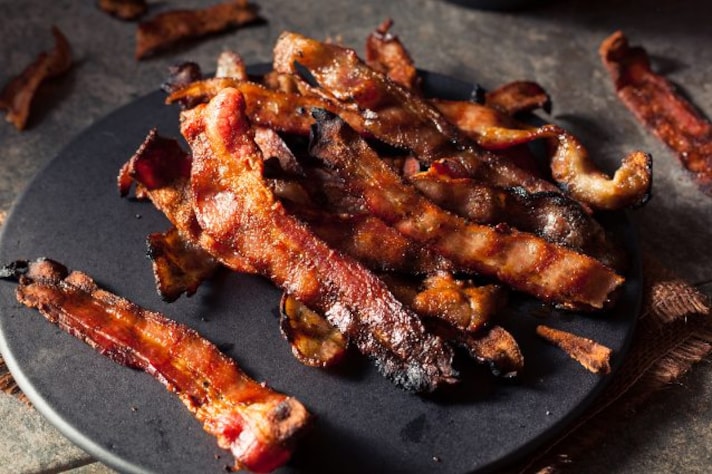
While bacon is salt-cured like deli ham, which might suggest it's safe to eat uncooked, consuming raw bacon isn't recommended in the United States due to potential health risks. Despite the popularity of cured and raw meats in some global cuisines, raw bacon still poses a threat of foodborne illness and should be handled with care.
Is It Safe to Eat Raw Bacon?
Raw or undercooked pork products, including bacon, may carry harmful bacteria, parasites, and viruses that can lead to serious foodborne illnesses. Although bacon is cured with salt and nitrites—which help preserve the meat and reduce bacterial growth—it is not fully cooked unless labeled as such. Therefore, eating raw bacon increases the risk of exposure to dangerous pathogens.
Potential Health Risks of Eating Raw Bacon
Curing bacon with salt and nitrites helps inhibit microbial growth and lowers the risk of botulism, but it does not eliminate all threats. Common foodborne illnesses linked to raw or undercooked pork include:
- Toxoplasmosis: Caused by a parasite, toxoplasmosis is usually harmless to healthy individuals but can be dangerous for pregnant women, young children, and those with weakened immune systems.
- Trichinosis: This parasitic infection results from roundworms found in undercooked pork. Symptoms can include diarrhea, muscle pain, fatigue, vomiting, and eye swelling.
- Tapeworms: These intestinal parasites can cause weight loss, abdominal discomfort, and digestive issues. They are especially concerning because they can go undetected for extended periods.
All these risks are significantly reduced or eliminated when bacon is properly cooked.

The Link Between Processed Meats and Cancer
Processed meats, including bacon, hot dogs, sausages, and deli meats, have been associated with an increased risk of colorectal cancer. According to research, the risk increases by approximately 18% for every 50 grams of processed meat consumed daily. The curing agents—nitrites and nitrates—used in these meats can convert into nitrosamines during digestion, which are known carcinogens.
How to Safely Handle and Cook Bacon
Minimizing health risks from bacon starts with proper handling and thorough cooking. The USDA requires safe handling instructions on all bacon packaging. Here are best practices:
- Keep raw bacon separated from ready-to-eat foods.
- Clean all utensils, cutting boards, and surfaces thoroughly after contact.
- Wash your hands with warm, soapy water before and after handling raw meat.
Although pork should be cooked to an internal temperature of at least 145°F, it's difficult to measure temperature in thin slices like bacon. The safest method is to cook bacon until it is golden brown and crispy. This ensures that harmful organisms are destroyed.

What Is the Safest Way to Cook Bacon?
Microwaving bacon is considered one of the safest cooking methods. It not only thoroughly cooks the meat but also produces fewer nitrosamines compared to frying or oven-baking. Overcooked or burnt bacon can increase the concentration of these carcinogenic compounds, so it’s important to avoid charring the meat during preparation.
;Resize,width=767;)
